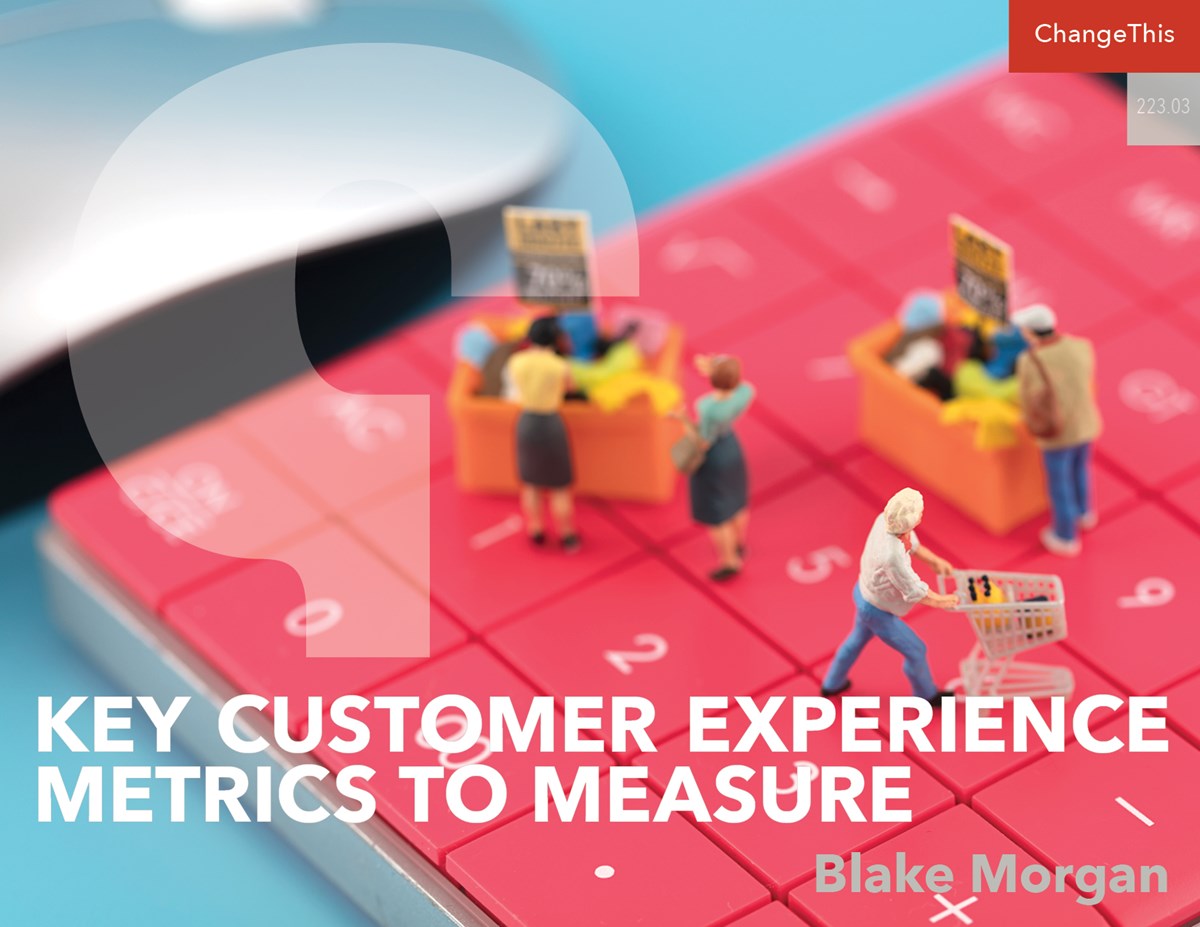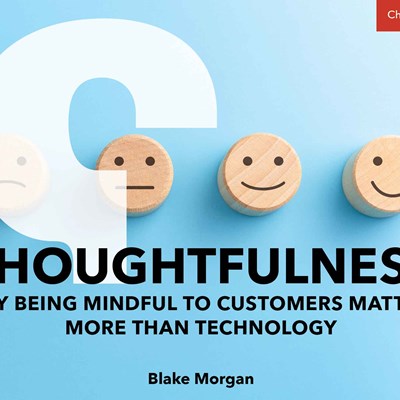Key Customer Experience Metrics to Measure
April 19, 2023
The right metrics are a powerful tool in proving the value of your CX efforts and why building and strengthening customer relationships matter to the bottom line.
Metrics are foundational to any successful customer experience strategy. As the old saying goes, “If you treasure it, measure it.”
Tracking the right CX metrics helps teams know the value and success of their efforts and where to improve to continually create a leading customer experience. One of the biggest challenges for CX teams is showing the impact of their efforts to get buy-in from executives and other departments. The right metrics are a powerful tool in proving the value of your CX efforts and why building and strengthening customer relationships matter to the bottom line.
Metrics also showcase opportunities for growth and help teams continually improve their experiences. Especially as customers gain more power and are less brand loyal, using metrics to improve and stay competitive is essential to maintaining customers and staying relevant.
But many old standards simply aren’t effective with today’s modern customers. Many brands used to rely on relatively simple metrics like NPS and CSAT that don’t tell the whole story of what customers want and if brands are meeting those expectations. These traditional metrics often leave out crucial aspects of the customer experience or don’t get to the root of customers’ expectations.
Companies need to level up their metric monitoring and track new behaviors and attitudes. 82% of CX leaders believe their budgets will increase this year. But Forrester says those numbers are overly optimistic and budgets are fragile in a recession. Doing more with less and proving the value of your CX efforts is essential to maintaining the budget and staying relevant, especially when many companies are slashing budgets.
The numerous options for CX metrics can be overwhelming, especially for brands looking to understand the entire experience of modern customers. What are the key metrics to measure now?
Here are five critical KPIs:
EARNED GROWTH RATE (EGR)
What it is: Earned Growth Rate was created by Fred Reichheld, who also created Net Promoter Score (NPS). For decades, NPS has been the gold standard of CX measurement because of its simplicity in asking customers how likely they are to refer the brand to family and friends. But as customers become more complex and companies learn to work the system, NPS is no longer as reliable as it once was.
Instead, Reichheld encourages companies to move to Earned Growth Rate—what he calls NPS 3.0—to track the growth a company earned through repeat purchases and customers referring the business to family and friends. The idea is that when customers are satisfied with an experience and loyal to a brand, they will refer it to their family and friends, who can then become valuable and loyal customers.
How to measure it: To be effective, EGR requires customer-based accounting to track where customers come from. Where NPS uses surveys to track intention, Earned Growth Rate tracks based on behavior. How much revenue was earned from existing customers or new customers who came from referrals?
Earned Growth Rate can be rather complex to measure. It requires tracking two other metrics:
-
Net revenue retention (NRR). Total this year’s revenue from customers who were with you last year and divide by last year’s total revenue.
-
Earned new customers (ENC), or the percentage of spending from new customers earned through referrals. This requires knowing how new customers found your brand and calculating how much revenue came from referrals.
Earned Growth Rate is then calculated by adding NRR and ENC and subtracting 100%.
Why it matters: It’s well established that returning and referred customers are much less expensive to acquire than new customers, often by 5x to 25x. ERG tracks how customers found your brand to provide a more accurate view of success and be more results-driven than NPS, which only measures a customer’s intention.
Instead of paying for new customers, brands can spend less to retain their current customers and get referrals. Reichheld’s research found that successful companies see up to 90% of their new customers coming primarily from referrals. Customers acquired this way also tend to be more loyal. Understanding ERG helps brands allocate advertising money and make the most of their current customer relationships.
FIRST CONTACT RESOLUTION (FCR)
What it is: As the name implies, First Contact Resolution measures the percentage of calls that are resolved on the first contact or service tickets that can be closed without the customer having to call back. The more times a customer has to contact a brand, the less likely they are to stay loyal and the more likely they are to share their negative experience.
FCR is among the top metrics tracked by large contact centers because it is a simple measure of the effectiveness of contact center agents and processes. FCR measures whether customers can do what they want to do with ease. Often, high FCR correlates with high NPS.
How to measure it: Calculate FCR by dividing the number of issues resolved on the first contact by the total number of cases handled by agents. The result is the percentage of calls that are resolved on the first contact. The goal is to have as high an FCR as possible.
Why it matters: A number of factors go into agents being able to resolve customer issues on the first contact. FCR helps brands understand if any segments of the customer journey are overly complicated or missing. It can also highlight common roadblocks to resolving issues quickly, which can then be handled to avoid future issues.
FCR is a relatively simple metric that leads to clarity in multiple areas of the customer and employee experience. Typically, companies with a low FCR score suffer from outdated processes and tools, such as clunky CRM technology or contact center agents having to track down a manager to ask questions or get permission. If contact center agents aren’t empowered with the right processes, tools, and policies to help customers, FCR goes down. Low FCR also typically relates to low employee engagement—agents want to resolve issues on the first contact just as much as customers and get frustrated when that doesn’t happen.
CUSTOMER EFFORT SCORE (CES)
What it is: Customer Effort Score (CES) tracks how easily customers can get the help they need. The ultimate goal of CX is to make customers’ lives easier, so CES should be as low as possible, signaling that customers can quickly get the help they need without jumping through hoops. CES is a strong partner to traditional NPS—when CES decreases, NPS tends to increase.
How to measure it: CES can be measured with surveys or by tracking behavior. A common way to track CES is with a simple survey question after a contact center interaction or in-store visit, such as “[Brand] made it easy for me to resolve my issue,” and answers ranging from “very difficult” to “very easy.”
Other brands track CES by a customer’s actions, such as measuring how long customers spend on an app or website before resolving their issue. T-Mobile considers and tracks the level of effort for customers to sign up for service, expand their current plan, and resolve issues by tracking how long it takes and how many clicks it takes to resolve issues digitally.
The goal is always to lower the number of clicks it takes for a customer to resolve an issue.
Why it matters: Customer effort is a leading indicator of how satisfied customers will be with your brand. When they find it difficult to get answers, they are much more likely to leave for the competition. CES is especially important to track as self-service options increase. Self-service should lower CES because customers can find solutions on their own schedules. Simplifying the product and customer experience puts more power in customers’ hands with self-service options.
CUSTOMER LIFETIME VALUE (CLV)
What it is: Not every customer spends the same or has the same relationship with a brand. Customer lifetime value puts a price on loyalty by predicting how much value and business each customer will bring to the brand over their relationship. CLV shows the total profit you expect a customer to generate over their relationship with your company. CLV helps brands measure customer loyalty and understand how their CX efforts drive revenue.
CLV is tied to usage—are customers actually buying more after a great experience? Or do they interact with a brand and then move on to another company? CLV helps brands know how their customer service impacts sales.
CLV goals vary wildly depending on the type of company—brands focused on specific niches such as pregnancy or wedding preparation have a shorter customer lifetime, while brands selling big-ticket items like cars and appliances have higher customer value. The goal is to increase CLV within the context of your business.
How to measure it: The simplest way to measure CLV is to divide the customer value by the average customer lifespan. Customer value can be calculated by figuring out the average revenue per purchase for each customer by looking at their historical averages. It can also be calculated for all customers by finding the total average purchase for all customers, meaning how much a customer spends on the average transaction. Average customer lifespan can be calculated by looking at historical data to see how long customers typically stick with the company.
Why it matters: Tracking customer lifetime value helps brands strategize their marketing efforts to keep valuable customers engaged and loyal. By knowing which customers are the most valuable, brands can strengthen those relationships and look to similar target customers.
CLV is also closely linked to customer acquisition cost and helps teams know how much to spend to acquire new customers without dipping into their profits. A higher customer acquisition cost may be worthwhile if it leads to a higher CLV.
CX teams now have to do more with less. Customers may be more hesitant to spend with an impending recession possible, and CX budgets are more fragile than ever. CLV helps brands know where to prioritize their efforts so they can continually strengthen relationships with high-value customers and create initiatives that increase CLV for all customers.
EXPERIENCE LEVEL AGREEMENTS (XLA)
What it is: XLA, or Experience Level Agreement, is the end-to-end version of each individual group or provider’s SLA or Service Level Agreement.
SLAs have long been used to track whether a service provider meets customers’ expectations, especially around availability and reliability. A typical customer journey has multiple SLAs, but a brand can hit all of its SLAs and still have low customer satisfaction. XLA brings together the expectations and goals of each aspect of the experience to look at how well the overall experience meets customers’ expectations.
XLA measures the gap between the experience you are currently providing and where you want to be. For example, a bank may have SLAs around gaining new customers, app communication, retention, and more. Bringing those individual SLAs together to consider if the entire customer journey is meeting expectations is the XLA.
How to measure it: XLA can be tracked in a few different ways, such as asking a basic survey question about a customer’s satisfaction after an experience or if the brand met their expectations. Many brands also tie sales, retention, and average completion time to their XLA metric to provide a holistic view of the customer experience. A critical component of XLA is that every area of the experience knows the metric and works together to improve the overall experience.
Why it matters: Customer experience is more than just a singular event. It includes every interaction a customer has with a brand, as well as their overall feelings toward the brand. A separate experience with each area simply checking a box doesn’t create a strong holistic experience that drives goodwill and loyalty toward a brand.
Customers can tell when experiences are siloed, as is often the case with SLAs. If each department or interaction tries to check a box without providing real, personalized customer service, they are missing the mark. XLA increases accountability and helps brands improve the handoffs and potential gaps between various service providers.
Lyft uses XLA after it saw that SLAs weren’t highlighting gaps in the customer experience. Although each area of the journey could have positive SLA, those results didn’t always tie to the overall customer experience. By tracking XLA, Lyft can identify black holes in the customer journey and find areas for improvement.
As customer demands, trends, and purchasing patterns change, brands also need to evaluate if their metrics are effective. Companies need to track customer experience metrics tailored to provide holistic, easy experiences for all customers.





